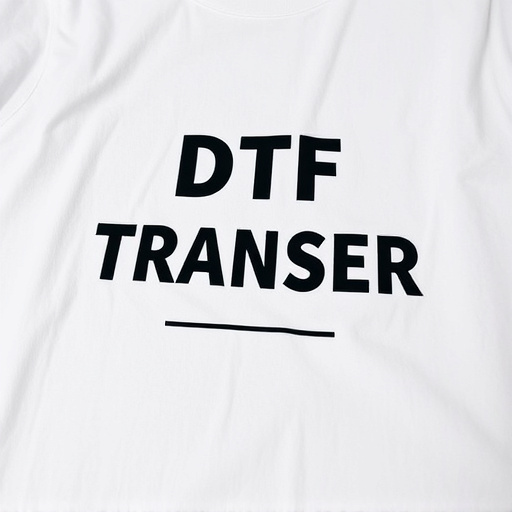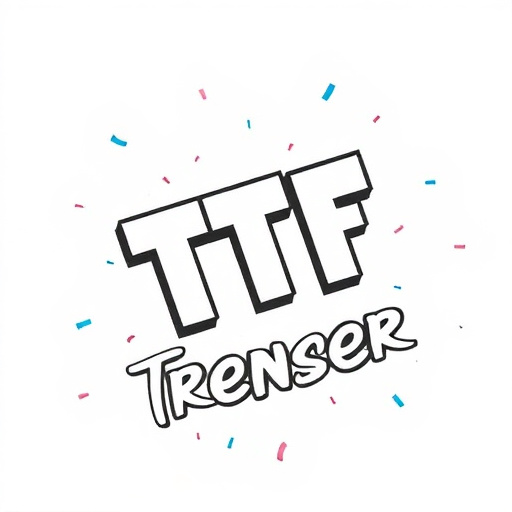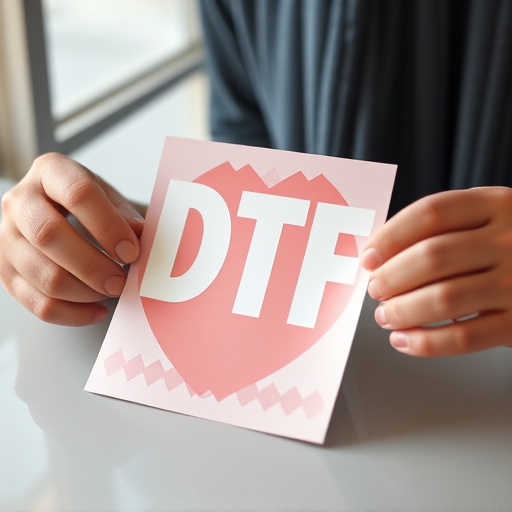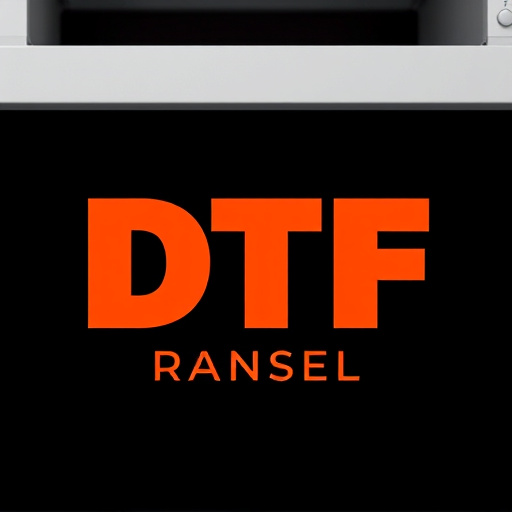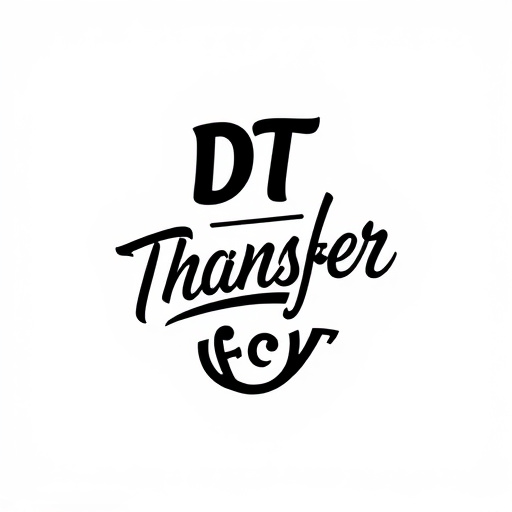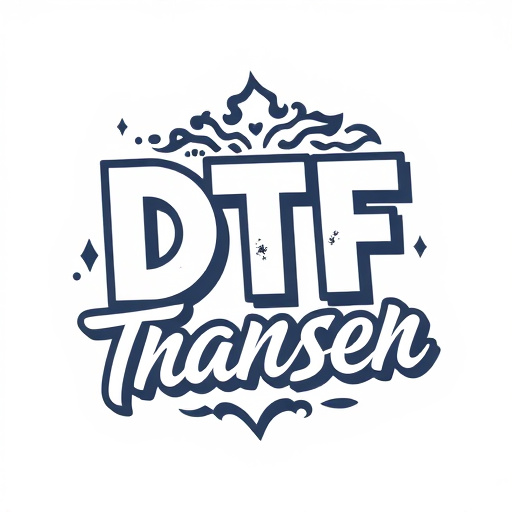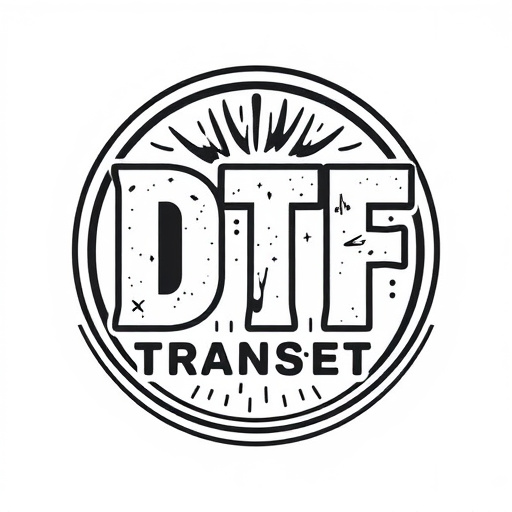Direct to Fabric (DTF) transfers have revolutionized printing, offering a flexible method to create vibrant, long-lasting prints on stretch fabrics like cotton, polyester, and spandex. This technology streamlines custom fabric creation for designers, manufacturers, and enthusiasts. DTF transfers ensure print integrity during fabric stretching, making them ideal for activewear, sports gear, and dynamic garments. They've expanded possibilities in fashion, sports, and home decor, seamlessly integrating functional and stylish designs into daily life. Key applications include apparel, textile art, signage, and advertising, with material compatibility and robust adhesion techniques ensuring longevity. Future innovations in material science and printing technology promise even better DTF transfer performance.
“Discover the future of print technology with flexible film transfers (DTF) that revolutionize textile design. This cutting-edge process allows for seamless integration of graphics onto stretchy fabrics, opening a world of possibilities for fashion, sportswear, and more. In this comprehensive guide, we explore DTF’s unique properties, from its ability to mimic the stretch of fabric to its diverse material compatibility. Uncover applications, adhesion techniques, care tips, and glimpse into upcoming innovations shaping the future of DTF transfers.”
- Understanding DTF Transfers: A Revolution in Print Technology
- The Unique Properties of Flexible Film Transfers
- Applications: Where DTF Transfers Shine
- Material Compatibility and Adhesion Techniques
- Ensuring Longevity: Care and Maintenance Tips
- The Future of DTF Transfers: Innovations to Watch
Understanding DTF Transfers: A Revolution in Print Technology

The world of printing has seen a remarkable evolution with the advent of Direct to Fabric (DTF) transfers, revolutionizing how we bring designs to stretchy fabrics. This cutting-edge technology offers a flexible and versatile solution for creating vibrant, long-lasting prints on materials like cotton, polyester, and even spandex. Unlike traditional methods that can be limiting and often require intricate processes, DTF transfers provide a direct and efficient way to apply graphics and patterns directly onto fabric.
With DTF, the printing process becomes more accessible, allowing designers, manufacturers, and enthusiasts to create custom fabrics with ease. The transfer technology ensures that the print moves with the fabric’s stretch, making it ideal for activewear, sports gear, and other dynamic garments. This innovation has opened up new possibilities in fashion, sports, and even home decor, where functional and stylish designs can be seamlessly integrated into everyday life.
The Unique Properties of Flexible Film Transfers

Flexible film transfers, like Digital Thermal Transfer (DTF) printing, offer a revolutionary approach to printing on stretchy fabrics. Unlike traditional methods that can be rigid and limited in their applications, DTF Transfers possess unique properties making them ideal for dynamic materials. The ability to stretch and conform to various fabric shapes without fracturing or losing image quality sets these transfers apart.
This flexibility is achieved through the DTF process, which uses heat to apply intricate designs directly onto fabrics. This method allows for vibrant colors, detailed prints, and a seamless integration of graphics with the fabric’s texture. Consequently, DTF Transfers are highly sought after in industries like fashion, sportswear, and event merchandising, where products need to move with the fabric while maintaining visual appeal.
Applications: Where DTF Transfers Shine

DTF transfers, or Direct-to-Fabric transfers, offer a unique and versatile application that truly showcases their potential. Their ability to conform to stretchy fabrics makes them ideal for a range of industries and products. In the apparel industry, DTF printing allows for dynamic designs on activewear, swimwear, and other stretch materials, ensuring comfort and style. It also enables the creation of custom, on-demand clothing lines with intricate, vibrant prints that wouldn’t be feasible with traditional methods.
Moreover, flexible film transfers find their place in the textile art world, where artists can create stunning, interactive pieces. These transfers can be used to design tactile, three-dimensional fabrics for installations, fashion shows, and even home decor. The technology also extends to outdoor applications, providing durable, weather-resistant signage and graphics for events, advertising, and wayfinding, thanks to their ability to adhere to various surfaces while maintaining flexibility.
Material Compatibility and Adhesion Techniques

The success of flexible film transfers, such as Digital Thermal Transfer (DTF), relies heavily on material compatibility and effective adhesion techniques. When applying DTF to stretchy fabrics, it’s crucial to select materials that can stretch and contract without compromising the transfer’s integrity or quality. Polyester and spandex blends are commonly used in apparel due to their flexibility and durability. These fabrics allow for a conformal fit, ensuring the printed image moves smoothly with the fabric.
Adhesion techniques play a vital role in maintaining the longevity of the transfer. Heat-activation adhesives are frequently employed as they provide strong bonding between the film and fabric. The heat melts the adhesive, allowing it to flow into microscopic crevices and create a secure connection. This process is essential for preventing peeling or cracking of the transferred image, especially during stretching and wearing.
Ensuring Longevity: Care and Maintenance Tips

To ensure the longevity of your flexible film transfers, or DTF Transfers, when used with stretchy fabrics, proper care and maintenance are essential. Avoid subjecting the transfer to excessive heat or direct sunlight as it can cause the colors to fade faster. Using gentle detergent and lukewarm water for washing is recommended to prevent damaging the delicate material.
When drying, opt for air-drying or a low-heat setting on your dryer to maintain the fabric’s elasticity and the transfer’s integrity. Store your DTF Transfers in a cool, dry place away from direct sunlight and moisture to minimize degradation. Regular cleaning and proper storage will help preserve the vibrancy of colors and keep the fabric supple, ensuring the longevity of your flexible film transfers.
The Future of DTF Transfers: Innovations to Watch

The future of Direct-to-Fabric (DTF) transfers looks promising, with continuous innovations pushing the boundaries of what’s possible on stretchy fabrics. One key area to watch is the development of more durable and stretchable materials for film transfers. Researchers are exploring advanced polymers and composite materials that can withstand repeated stretching and washing without losing their quality, ensuring longer-lasting garments.
Additionally, advancements in printing technology are enabling finer detail and richer colors on DTF prints. Inkjet printers with higher resolutions and specialized inks capable of adhering to various fabric types are becoming more accessible. These innovations promise to elevate the visual appeal and customization options for DTF transfers, making them a sought-after choice for fashion designers and businesses seeking unique, on-demand printing solutions.





